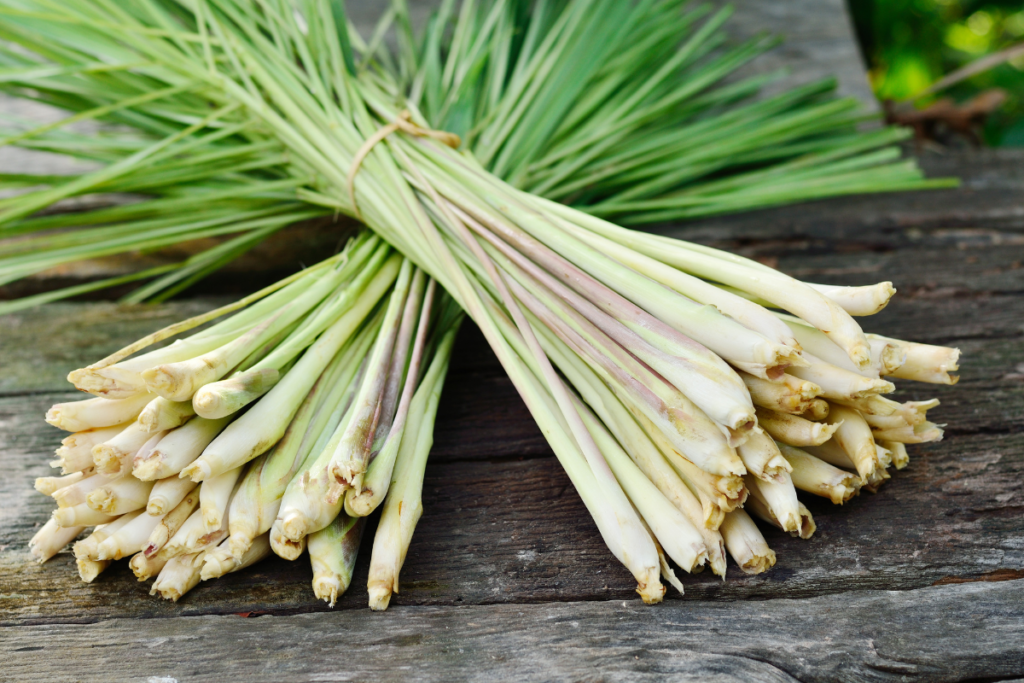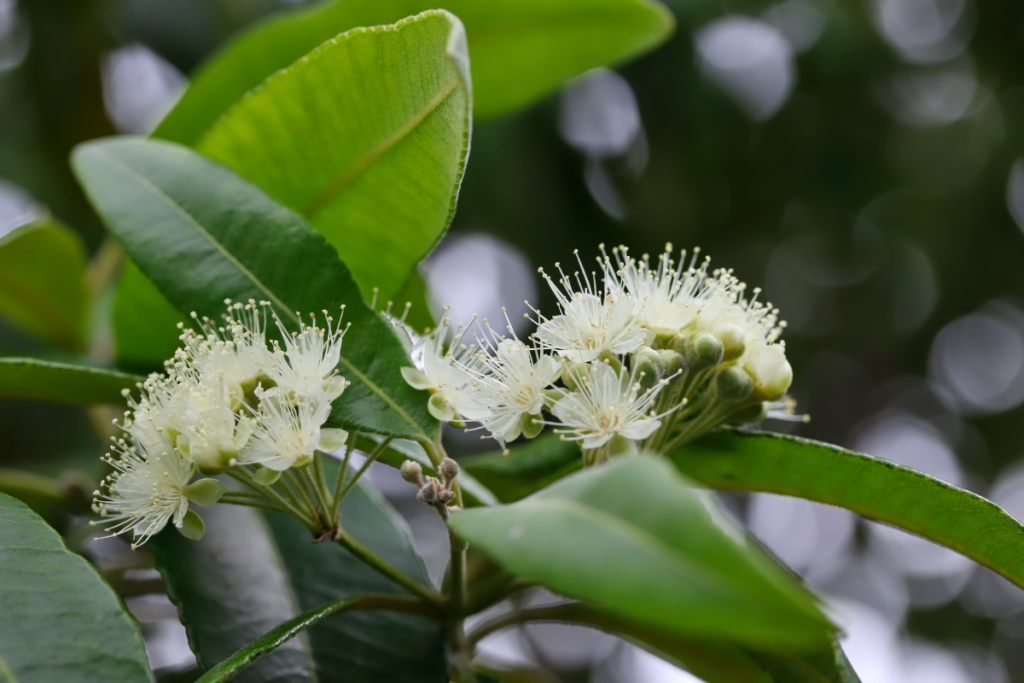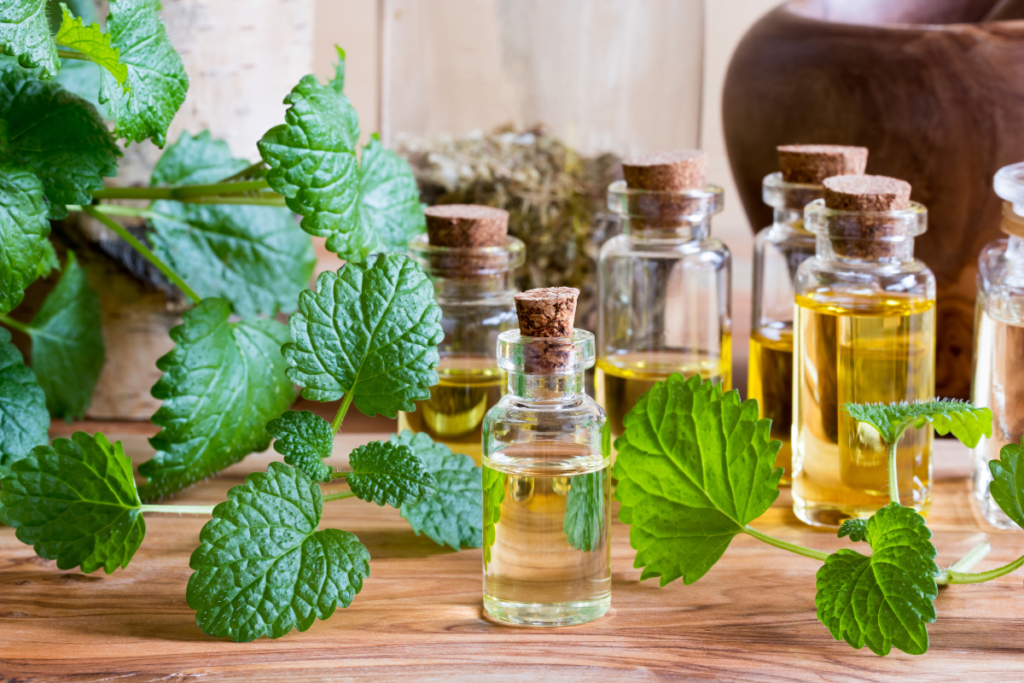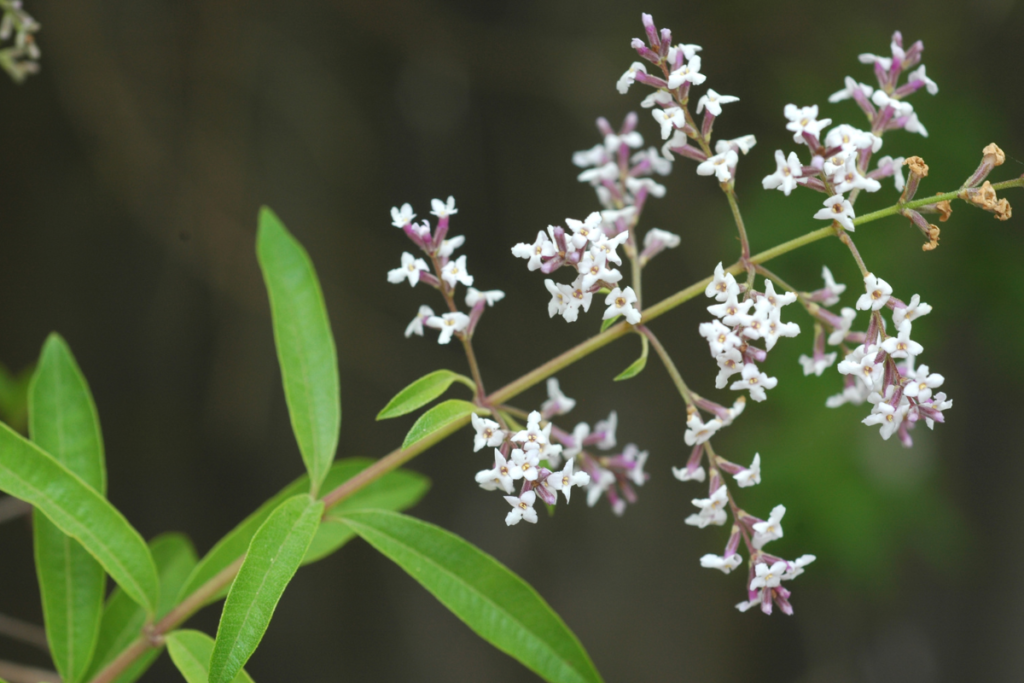Ancient and medieval sources report the use of citral on swellings, tumors and hardenings. While there’s a lot still for science to explore and explain, folk medicine has used the therapeutic benefits of citral, and applied it to effectively treat a variety of ailments for centuries.
Essential oils that have high concentrations of citral include lemongrass, lemon verbana, melissa oil and lemon myrtle. Citral is a mixture of two aldehydes geranial and neral, and has a stronger lemony fragrance than lemon oil.
In this article, I breakdown which essential oils have high levels of citral, how much each one has, and how to use them safely. I also explain the positive and negative properties attributed to this ancient compound.
Citral and Aromatherapy
Citral gives the typical lemony smell to several lemon scented aromatic plants, but essential oils are mainly isolated from the leaves of lemongrass (Cymbopogon citratus). It’s also abundant in the peels of citrus fruits (e.g., orange), as well as the aerial parts of plants like the Lippia alba botanical species (flowering plant in the verbena family).
Its intense fragrance make it a popular ingredient in foods, perfumery, cosmetics and cleaning products. In fact, it’s used as a natural flavoring and preservative agent, as a fragrance, and used to help make vitamin A, ionone and methylinone.
On the science side of things
Citral is the natural mixture of two compounds with very similar chemical properties – called geranial and neral. While they are different structurally, they almost always appear together in the essential oils of several aromatic plants. Together, they make up a clear yellow volatile liquid with a very intense lemon odor and a bittersweet taste.
Citral, like most aldehydes, is known for having sedative effects. Although, studies have shown us that citral has antiseptic properties as well as spasmolytic, antimicrobial, anti-inflammatory, analgesic and chemopreventive activity. Citral-rich essential oils also usually have antimicrobial, antifungal, and antiparasitic properties.
As with every compound with potent biological activity, citral can irritate the mucous membranes that line our organs and is a weak skin sensitizer that can cause contact dermatitis (this applies to most aldehydes). There are several precautions that need to be taken when using oils with high citral content. Especially for pregnant women, as clinical trials have proven that it damages reproductive performance, as well as glaucoma sufferers, as it increases ocular pressure even with low oral dosages.
Citral is also toxic by ingestion and causes liver damage, oils containing high concentrations should not be applied internally. However, the toxicity of citral seems to be reduced when in the presence of other ingredients, in particular terpenes.
This means citral-rich oils are generally considered safe when used diluted and combined with an oil high in terpenes such as d-limonene. While local skin irritation can be treated by rinsing and washing the skin with water and soap.
Essential oils with high citral content
Did you know that citral is believed to be more lemony than lemon? The intense citrus notes of citral far surpass the lemony qualities of limonene, which is the terpene that gives lemon oil its scent. That said, here are the essential oils with high levels of citral:
Lemongrass oil
The essential oil of lemongrass contains up to 73% citral, which is a mixture of ~62% of geranial and ~38% of neral.

The plant is sometimes called fever grass, as some cultures infuse its leaves in tea to reduce fever. As a herbal tea, it can also treat indigestion and other gastrointestinal disorders, but the oil should not be ingested.
The oil has analgesic properties, which is why it’s used topically (on skin) to treat muscular and joint aches, especially after exercise. Several studies are also investigating the antimicrobial and anticancer properties of the citral component of lemongrass.
In very low dilution, it can also treat acne. When it’s inhaled, it’s said to provide an emotional boost and help focus. It blends well with citrus, wood, mint and herbaceous fragrances.
Safety precautions: The literature advises against adding lemongrass oil to bathwater as it poses a risk of skin irritation and sensitization. However, it is not phototoxic. The topical use of lemongrass oil is not recommended for children and infants, or people with hypersensitive, or damaged skin. A dermal application (on skin) maximum of 0.7% is usually advised.
Lemon myrtle oil
The essential oil of lemon myrtle contains between 80 and 97% citral, which is usually made up of ~60.7% of geranial and ~40.9% of neral.

It has an intense sweet, fresh scent that suits citrus, wood, floral, camphorous and mint fragrance blends. Lemon myrtle is a strong antibacterial oil used in diffusion blends as a sedative, to reduce symptoms of influenza and bronchitis.It’s also used to help calm nerves and anxiety.
Safety precautions: Topically (in dilutions with a dermal maximum of 0.7%) it can be used with acne and oily skin. In general, the literature advises against topical use in children and infants, and people with hypersensitive, diseased or damaged skin.
Melissa oil
The essential oil, known as Melissa oil or lemon balm, contains ~70% citral and is usually a mixture of 44.2% geranial and 30.2% neral.

It comes from the leaves and flowers of Melissa officinalis botanical species, which don’t yield much essential oil. So the oil is either adulterated (diluted and mixed with other oils) or has a high price. Melissa oil’s fresh lemony, herbaceous fragrance is said to soothe anxiety and depression symptoms.
Safety precautions: Topically (diluted with a dermal maximum of 0.9%) it can be helpful for acne and oily skin. The literature advises against topical use in children and infants, and people with hypersensitive, diseased or damaged skin. It should also be avoided in the bath.
Lemon verbena oil
The essential oil of lemon verbena contains around 44% citral and contains more geranial (~26%) than neral (~17%).

It’s steam distilled from the leaves of the Aloysia citriodora botanical species, and has the lemony herbaceous aroma of citral. Lemon verbena oil is often used in diffusion blends for its uplifting and anxiolytic properties, that help ease feelings of stress and lethargy as well as treat insomnia.
Lemon verbana oil is well suited in combination with citrus, coniferous, minty, fruity, green and woody fragrances.
Safety precautions: The literature advises against using it on hypersensitive, diseased or damaged skin, or with children. It may be slightly phototoxic. The recommended dilution for dermal application is a maximum of 0.9%.
Related Questions
Are citral and lemongrass the same thing?
Citral and lemongrass are not the same. Lemongrass is a plant that belongs to the Poceae family of grasses, native to India, China, Thailand and other tropical countries. The medicinal properties of lemongrass are attributed to its major constituents, geranial and neral. These are aldehydes known together as citral.
Both the leaves and the oil are popular ingredients in foods and medicine, due to its flavor, fragrance and health benefits.
Citral is an unsaturated aldehyde which results from the combination of geranial and neral in varying ratios. It is mainly extracted by distillation from lemongrass oil for industrial use. Lemongrass is a plant whose oil has antibacterial properties thanks to its abundance in this compound.
What foods contain citral?
Natural sources of citral include lemongrass, verbena and citronella. At the same time, citral is widely used as a flavoring agent in many foods and drinks. Citral is found in alcoholic and nonalcoholic beverages, baked goods, cheese, chewing gum, frozen dairy, gelatin, candy and meat products.
Citral has an intense lemony fragrance and a bittersweet taste. It is most commonly obtained from lemongrass oil, which contains high amounts of geranial and neral, and can also be synthesized from the natural monoterpene known as myrcene, found in bay and hops.
